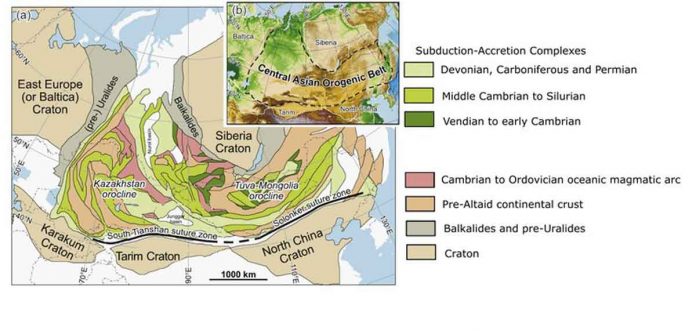Mesozoic granitoids are widely distributed in Qinling orogen. They provide authentic clues for understanding the crustal evolution and geodynamic evolution of the orogenic belt.
Prof. Sun Weidong from the Institute of Oceanology of the Chinese Academy of Sciences (IOCAS) and Prof. Chen Fukun from University of Science and Technology of China (USTC) provided a data set which has zircon Uranium-Lead (U-Pb) dating and elemental and Strontium-Neodymium (Sr-Nd) isotopic geochemistry for Late Mesozoic granite and microgranular enclaves (MME) exposed in the Taibai complex pluton.
The study was published in the journal named Journal of Earth Science. Scientists found that the granite and MME yielded concordant U-Pb zircon ages of 124 Ma to 118 Ma. It indicates simultaneous magmatism in the Late Mesozoic.
The granite rocks were characterized by enrichment in large ion lithophile elements, depletion in high field strength elements and variable Sr/Y ratios of 7.64 to 63.6. Low MgO, Cr and Ni contents imply that the magmas were essentially crustal-derived.
Researchers also found that both the granite and the MME showed relative depletion in Sr-Nd isotopic composition. It suggests that the magma(s) originated from juvenile crustal rocks. These Sr-Nd isotopic characteristics were totally different from those of other Late Mesozoic granitoids exposed elsewhere in the Qinling orogenic belt.
These formed from much older and enriched sources and with negligible contributions from mantle or juvenile crust. Scientists proposed a reworking event of the juvenile crust during the Late Mesozoic as it was triggered by the tectonic extension and subsequent asthenospheric upwelling that happened in eastern China.

